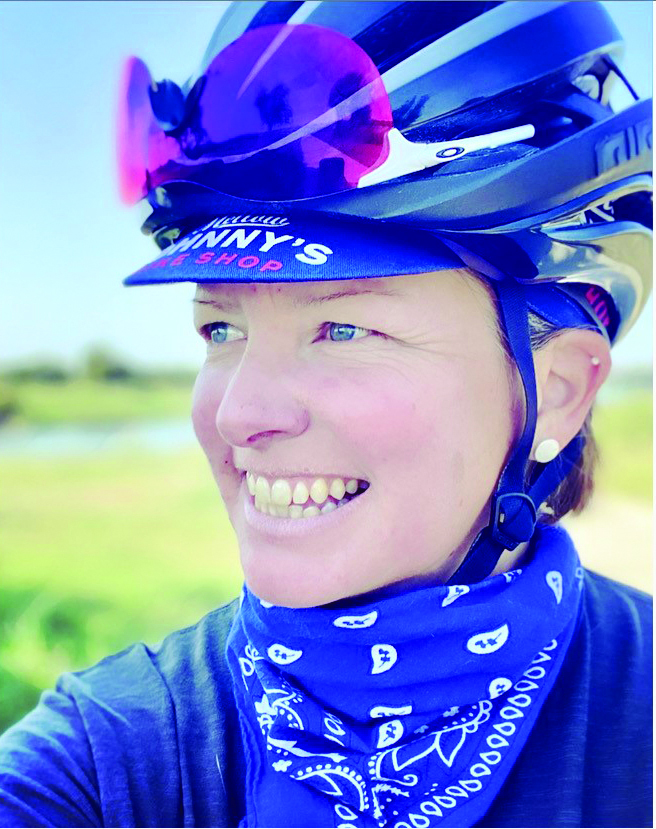Sponsored by
Choosing the Right Bicycle

Understanding the purpose in the geometry for the different categories of bicycles and choosing the right bicycle can be daunting when you’re first ready to commit to the community. Designing and leading adventure cycling trips around the world for fifteen years, working with local shops to instruct group rides, and get women introduced to the sport me gave the chance to learn about how to help an athlete find the right bike. Here are the three questions you should consider:
- Where do you want to ride? This helps you know what kind of bike you’re aiming for and how ‘comfortable’ or ‘aggressive’ you’d like the set up to be.
- What are your overall goals as a cyclist? Group rides, commuting, competing, fitness, exploring or weekend road rallies, or those fun ‘t-shirt’ rides.
- How much are you able to invest in getting started in the sport right now? A local bike shop where employees don’t work on commission will be motivated to help you get the right bike for your needs and not necessarily one in their shop.
Each different type of bike and its components are incredibly engineered for the specific type of riding you’re doing. The following few categories will get you headed in the right direction.
Road Bike
- Designed for riding on paved roads with narrower tires for speed and efficiency.
- Drop handlebars for aerodynamics and multiple hand positions and meant to go farther, faster.
- Sub-categories include criterium racing, endurance riding, and fitness.
- If your focus as you get started in cycling is entering triathlons, I always ask what distance you’d like to focus on and often steer newcomers doing sprint, Olympic and half triathlon distances to the road bike. The big reason has to do with group rides you might want to train with to get tips and get stronger. Many of them do not allow triathlon bikes with the aero set up because it’s hard to respond to a hazard and even turn in a group setting. Tri bikes are traditionally designed for out and back courses and you can be limited in agility in a group setting.
Mountain Bike
- Meant to get you out on those trails and most will have at least front suspension, others have full suspension and there’s even a rigid category. It’s all about how technical you’d like to be, what kind of suspension you need for a specific geographical area, and how little wear and tear you want on your body while you advance those skills.
- Upright handlebars allow your bike shop to cut a width that best fits your body.
- Typically your tire size choices are either 27.5 inches or 29 inches.
Gravel or Cyclocross Bike
- This is where the industry has seen enormous growth due to the versatility of the design and a combination of properties that give you a ton of options.
- They’re adventure bikes, capable of making you comfortable on packed gravel roads as well as smooth pavement. If you’re looking to get into bike touring and exploring on a bike, also a home run.
- Your tire width is wide as you’d like between a certain range and can be smooth or knobby. It’s again, all about where you’re living and what you’re riding on.
- A note with the cyclocross or CX bike is that you’ll have more clearance between your tires to perform in the often muddy course and be a little more meant for racing shorter amounts of time and over obstacles, when your gravel bike is meant more for longer miles and keeping you comfortable in that saddle while you’re out there.
Triathlon Bike
- These are road bikes with aerodynamic properties that get a participant in a crouched position due to the aero bar set-up and minimize wind resistance. Those aero bars extend toward the front of the bike, over the front wheel.
- The longer the tri distance you’re aiming for will help you know just how efficient you’d like to get in the aerodynamics department.
- Bike shops that are triathlon specific truly have the expertise in that department and cover a lot more ground with getting you set up correctly for all three stages in one place.
Ask around and see where friends who are cyclists have had good experiences and work with the shop that takes the time to really explain things and listen to you. It’s a big investment of time and funds but it’s a sport with a thriving opportunity to both connect and explore and it’s one you will do your entire life. Choosing the right bicycle will lead you to have many years of happiness on two wheels.
After deciding on where you’d like to go, it’s all about getting the correct size for your body. Choosing the right bicycle is a start, making sure it fits properly is the next step.
Do know that eventually you’ll want to dabble in all the categories of cycling, and have several bikes in the house. Sometimes it’s the whole master suite and you’re sleeping on a cot in the garage. It’s called the +1 problem and it’s perfectly normal!










